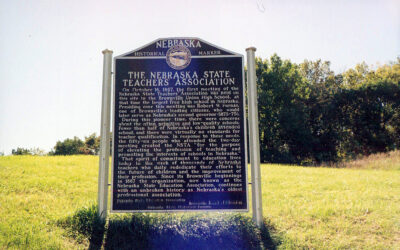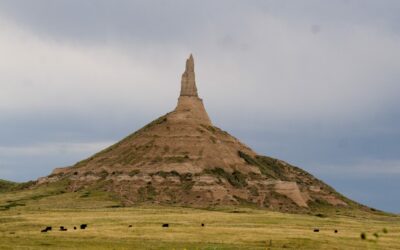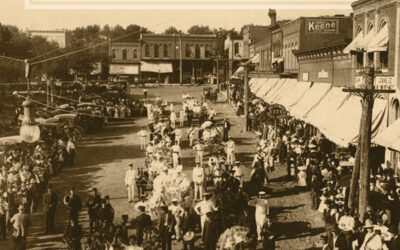Though it looked like a suicide, an organization called the American Protective Association was convinced that the death of South Omaha’s mayor was a Catholic plot. The APA’s weekly Omaha newspaper, The American, spread unfounded rumors and tried to discredit local “Romanist” officials.

By David L. Bristow, Editor
South Omaha Mayor Charles P. Miller was found unconscious and mortally wounded by a bullet. He died the next day.
Though it looked like a suicide, an organization called the American Protective Association was convinced that Miller had been murdered by Catholics as part of a sinister plot. The APA’s weekly Omaha newspaper, The American, spread unfounded rumors and tried to discredit local “Romanist” officials. The clipping above is the headline from October 14, 1892.
Anti-Catholicism has a long history in the United States. The first big American anti-Catholic movement emerged in the 1830s. Others followed in the 1850s, 1890s, and 1920s, usually tied to economic turmoil and rising immigration by Catholic ethnic groups.
After an 1889 visit, British writer Rudyard Kipling remarked that Omaha “seemed to be populated entirely by Germans, Poles, Slavs, Hungarians, Croats, Magyars, and the all the scum of the Eastern European States….”
Many Nebraskans felt similar disdain. Even so, The American claimed to have no ethnic prejudices. The APA’s motto was “America for Americans—We hold that all men are Americans who swear allegiance to the United States without a mental reservation in favor of the Pope.” They believed that Protestants held religious beliefs that reinforced American values, while Catholics were essentially a mindless peasant mob loyal to a foreign hierarchy.
Creating distrust was a big part of APA strategy. You can see it in the sub-headline: “The Community Believes Mayor Miller, of South Omaha, Was Murdered, and the Verdict of the Coroner’s Jury Will Not Alter the Case in the Least.” In other words, it didn’t matter what the law enforcement system concluded because the APA already knew the truth.
Though the case was initially considered a suicide, The American claimed vindication when two Catholic men were suddenly arrested for the murder of the Protestant mayor.
During the trial, the prosecution’s case relied on the testimony of a single witness, but a parade of defense witnesses soon discredited her testimony, established an alibi for the defendants, and provided eyewitness and medical evidence that Miller’s death was probably a suicide. Douglas County Attorney T. J. Mahoney asked Judge Louis Berka to dismiss the charges—and then filed perjury charges against the lone prosecution witness.
Reading the Irish name “Mahoney,” you can probably guess how the APA reacted. In its December 9 edition, The American labeled the county attorney a “Romanist” and implied that he was therefore biased and unfit for office. “In short the defendants were aided in every possible way while at the same time the interests of the state were, apparently, neglected.”
The APA had insisted from the beginning that Miller’s death was a “Romanist” plot. It was prepared to celebrate a guilty verdict as proof of its claim—but exoneration worked just as well, as it demonstrated the Romanist corruption of the legal system. Within its closed loop of reasoning, the APA couldn’t lose.
The American ceased publication in 1899 and the APA faded from memory. By the 1920s the largest anti-Catholic organization in Nebraska (and in the US) was the second Ku Klux Klan.
(Posted 3/17/2021; updated 9/30/2021)
Sources
“The American. Omaha, Nebraska (1891-1899),” Nebraska Newspapers, University of Nebraska-Lincoln Libraries, https://nebnewspapers.unl.edu/lccn/2017270212/
Hofstadter, Richard, The Paranoid Style in American Politics and other Essays (New York: Vintage Books, 2008), 19-23, 78. (Brief overview of history of anti-Catholicism in US.)
Kipling, Rudyard, From Sea to Sea: Letters of Travel, Part II (New York: Charles Scribner’s Sons, 1900), 226.
Selected news reports:
“The First Martyr,” The American (Omaha, NE), Oct. 14, 1892. Chronicling America: Historic American Newspapers. Lib. of Congress. <https://chroniclingamerica.loc.gov/lccn/2017270212/1892-10-14/ed-1/seq-1/>
“Mayor Miller Found Shot,” Omaha Daily Bee, Oct. 5, 1892, 1. <https://chroniclingamerica.loc.gov/lccn/sn99021999/1892-10-05/ed-1/seq-1/>
“Mayor Miller is Dead,” Omaha Daily Bee, Oct. 6, 1892, 8. <https://chroniclingamerica.loc.gov/lccn/sn99021999/1892-10-06/ed-1/seq-8/>
“The Mayor Miller Inquest,” Omaha Daily Bee, Oct. 21, 1892, 7. <https://chroniclingamerica.loc.gov/lccn/sn94056415/1892-10-21/ed-1/seq-7/>
“For Miller’s Murder,” Omaha Daily Bee, Nov. 30, 1892, 1. <https://chroniclingamerica.loc.gov/lccn/sn99021999/1892-11-30/ed-1/seq-1/>
“Says She Saw Hays Shoot,” Omaha Daily Bee, Dec. 3, 1892, 2. <https://chroniclingamerica.loc.gov/lccn/sn99021999/1892-12-03/ed-1/seq-2/>
“Clara Was Merely Hiding,” Omaha Daily Bee, Dec. 7, 1892, 8. <https://chroniclingamerica.loc.gov/lccn/sn99021999/1892-12-07/ed-1/seq-8/>
“Hays and Berlin Go Free,” Omaha Daily Bee, Dec. 8, 1892, 1. <https://chroniclingamerica.loc.gov/lccn/sn99021999/1892-12-08/ed-1/seq-1/>
“The Miller Case,” The American, Dec. 9, 1892, 5. <https://chroniclingamerica.loc.gov/lccn/2017270212/1892-12-09/ed-1/seq-5/>




